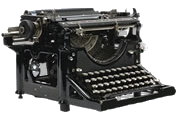The Late-War Era Brought Late-War Divorces
(Liberty Magazine, 1944)
“The divorce rate took a sharp upswing in all the warring countries after World War I, and another rise after this war is already being foreshadowed… Much of the post-war rise in the divorce rate is expected to come from the untying of knots too hastily tied as a result of [the 1941] war hysteria.”
